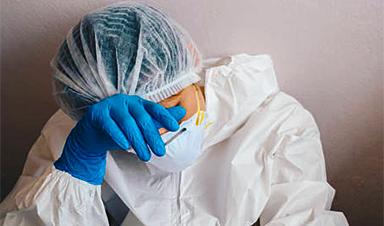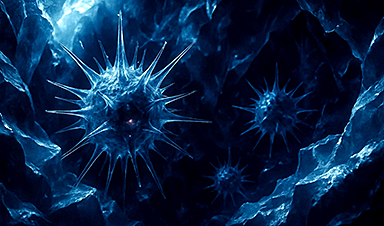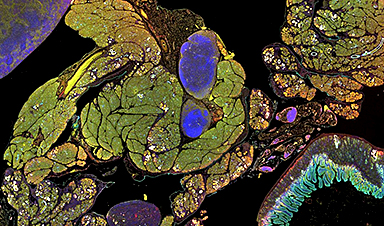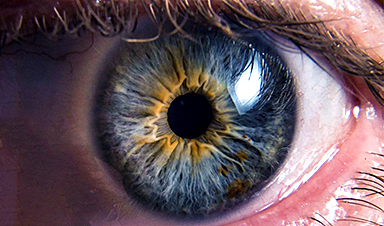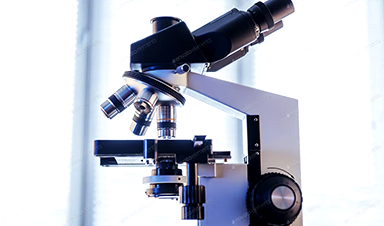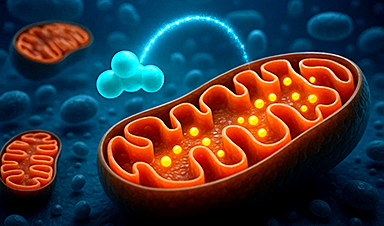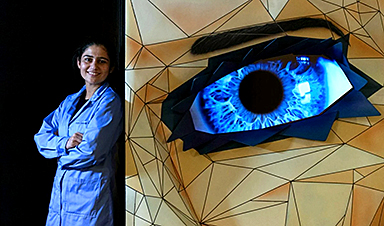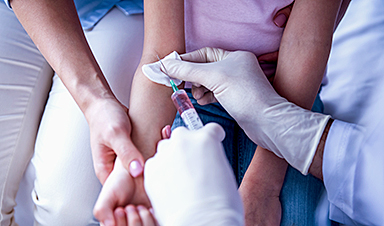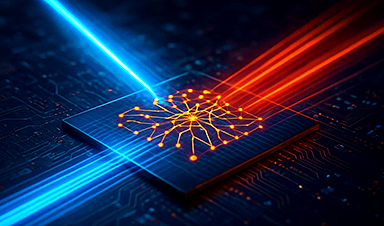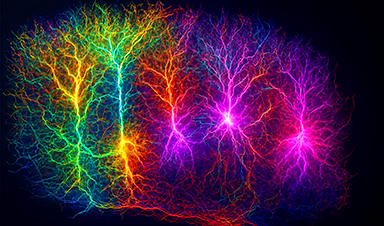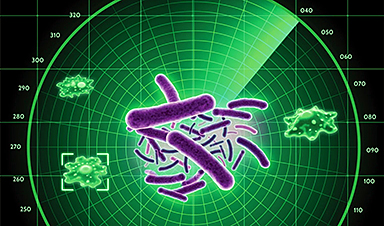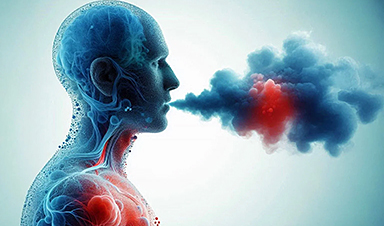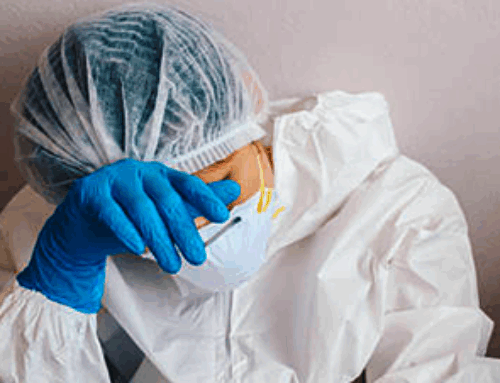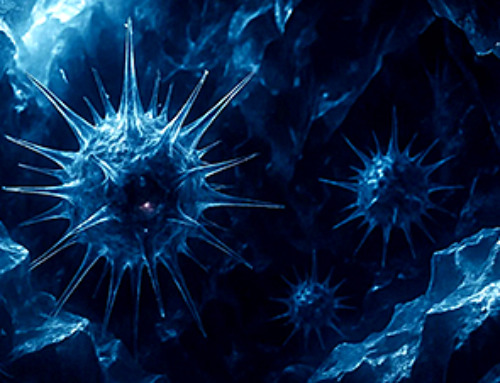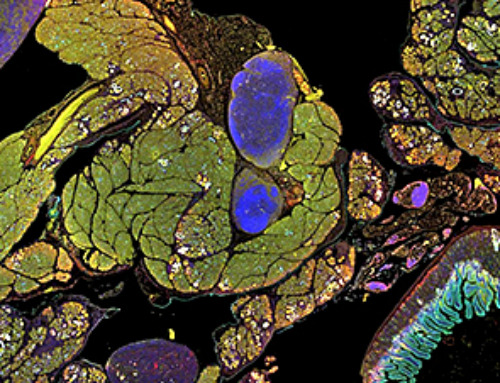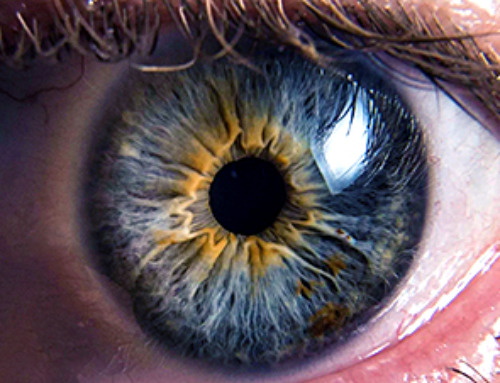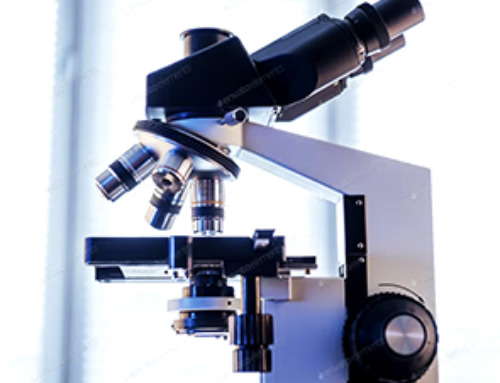Harnessing nanoparticles to deliver drugs precisely to a surgically repaired tendon is a promising new approach that reduced scar tissue formation and improved mechanical function. Researchers’ success in pinpointing a drug therapy inside the body, at the cellular level, proved to be a highly efficient delivery method that could be used to treat other injuries. Their study is published in Science Advances.
Whether it’s a season-ending Achilles rupture by pro footballer Aaron Rodgers or an everyday workplace accident, tendon injuries are common and can be life-changing. They require 300,000 surgeries per year and often result in lost work time and permanent impaired physical function.
Typically, traumatic tendon injuries are surgically repaired with sutures, but optimal healing is often impaired by the tendon’s propensity to heal with scar tissue that restricts tendon movement and function.
Researchers at the University of Rochester and University of Oregon combined their expertise in tendon cell biology and drug delivery systems to find a better way to deliver therapies that can reduce scar tissue and facilitate improved healing.
“There are very few effective drug regimens to assist the tendon healing process, despite the high number of these injuries and the poor outcomes that often result,” said Alayna Loiselle, Ph.D., associate professor at the University of Rochester’s Center for Musculoskeletal Research.
“Systemic drug treatments delivered orally or via injection show poor tendon homing; in some cases, less than 1% of a systemically delivered medication reaches the healing tendon. Local administration of drugs directly to the tendon has disadvantages as well, including potential tissue damage from the injection and poor control over drug concentrations at the point of injury.”
“We want to pivot from using suturing alone to incorporating therapeutics,” said Emmanuela Adjei-Sowah, a Biomedical Engineering Ph.D. student at the University of Rochester, who has spent the past several years working with co-authors Loiselle, Danielle S.W. Benoit, Ph.D., and others to develop the nanoparticle delivery system to improve healing in tendon injuries. “Advances in multiomics and drug delivery using nanoparticles open up new possibilities in treatment.”
The challenge for researchers was to identify which substances could assist tendon healing.
Molecular ‘map’ of healing process charts a new therapeutic path
“The fundamental cellular and molecular mechanisms that drive scar-mediated tendon healing are really only just beginning to be well-defined,” Loiselle said. “Our prior work used spatial transcriptomic profiling to define a molecular map of the healing tendon. In subsequent analysis of this data, we found that the area right at the injury site had high levels of Acp5 gene expression, which was both surprising and exciting.”
The Acp5 gene produces a protein called Tartrate Resistant Acid Phosphatase (TRAP); both are known to occur as injured bones recover and rebuild. High TRAP activity within the healing tendon allowed researchers to employ a peptide that binds with TRAP to deliver medication directly to the healing tendon site.
“While Benoit’s lab has previously used TRAP-binding peptide nanoparticles (TBP-NP) for targeted drug delivery to bone, high TRAP activity in the healing tendon opened up an entirely new research direction,” Loiselle said.
Prior to initiating studies with therapeutic agents, the team completed a series of dose and timing studies, using a mouse model of complete transection and surgical repair of the flexor tendon, to define the window in which their drug delivery system could most effectively target the healing tendon.
“Defining an optimal treatment window is critical to successfully developing an innovative and effective drug delivery system that improves tendon healing by encouraging a more regenerative, rather than fibrotic, healing cascade,” said Benoit, the Lorry Lokey Department Chair and Professor in the Department of Bioengineering at the University of Oregon.
“In addition, by defining the optimal therapeutic window for this drug delivery system, we can mitigate the unwanted side effects that typically accompany the high doses or multiple doses required to achieve sufficient drug accumulation in the tissue.”
As a therapeutic, the team chose Niclosamide, which inhibits S100a4, a protein that Loiselle’s lab already identified as contributing to scar formation. Previous work from Loiselle’s lab demonstrated that genetic knockdown of S100a4 improved mechanical and functional outcomes in this mouse tendon healing model.
S100a4 has been implicated in scar formation in many tissues, including the liver, heart, lung, and oral submucosa; Loiselle’s discovery that it complicates tendon healing gave them a therapeutic target for this study, where they used their TRAP-binding peptide nanoparticle drug delivery system to precisely affect the injured tendon.
As a comparison, they delivered Niclosamide systemically; it did slightly reduce the amount of S100a4 in the healing tendon but it had no beneficial impact on the healing process. In contrast, delivery of the same dose of Niclosamide using the nanoparticle system resulted in robust inhibition of S100a4 mRNA and protein levels in the healing tendon.
This targeted drug delivery method also significantly benefited the tendon healing process. TBP-NP delivery of Niclosamide improved both functional range of motion recovery and increased the mechanical integrity of the healing tendon across both short- and longer-term timepoints. Importantly, these sustained effects occurred with just a single treatment.
Researchers will continue their work to define how broadly the system can be used for other tendon injuries and disease, as well as other types of tissue injury that result in scar formation.
“The beauty of this system is that it can be loaded with different kinds of drugs to target different molecular processes or pathways,” said Adjei-Sowah.
More information: Emmanuela Adjei-Sowah et al, Development of a nanoparticle-based tendon-targeting drug delivery system to pharmacologically modulate tendon healing, Science Advances (2024). DOI: 10.1126/sciadv.adn2332
Journal information: Science Advances
Provided by University of Rochester Medical Center
News
Studies detail high rates of long COVID among healthcare, dental workers
Researchers have estimated approximately 8% of Americas have ever experienced long COVID, or lasting symptoms, following an acute COVID-19 infection. Now two recent international studies suggest that the percentage is much higher among healthcare workers [...]
Melting Arctic Ice May Unleash Ancient Deadly Diseases, Scientists Warn
Melting Arctic ice increases human and animal interactions, raising the risk of infectious disease spread. Researchers urge early intervention and surveillance. Climate change is opening new pathways for the spread of infectious diseases such [...]
Scientists May Have Found a Secret Weapon To Stop Pancreatic Cancer Before It Starts
Researchers at Cold Spring Harbor Laboratory have found that blocking the FGFR2 and EGFR genes can stop early-stage pancreatic cancer from progressing, offering a promising path toward prevention. Pancreatic cancer is expected to become [...]
Breakthrough Drug Restores Vision: Researchers Successfully Reverse Retinal Damage
Blocking the PROX1 protein allowed KAIST researchers to regenerate damaged retinas and restore vision in mice. Vision is one of the most important human senses, yet more than 300 million people around the world are at [...]
Differentiating cancerous and healthy cells through motion analysis
Researchers from Tokyo Metropolitan University have found that the motion of unlabeled cells can be used to tell whether they are cancerous or healthy. They observed malignant fibrosarcoma cells and [...]
This Tiny Cellular Gate Could Be the Key to Curing Cancer – And Regrowing Hair
After more than five decades of mystery, scientists have finally unveiled the detailed structure and function of a long-theorized molecular machine in our mitochondria — the mitochondrial pyruvate carrier. This microscopic gatekeeper controls how [...]
Unlocking Vision’s Secrets: Researchers Reveal 3D Structure of Key Eye Protein
Researchers have uncovered the 3D structure of RBP3, a key protein in vision, revealing how it transports retinoids and fatty acids and how its dysfunction may lead to retinal diseases. Proteins play a critical [...]
5 Key Facts About Nanoplastics and How They Affect the Human Body
Nanoplastics are typically defined as plastic particles smaller than 1000 nanometers. These particles are increasingly being detected in human tissues: they can bypass biological barriers, accumulate in organs, and may influence health in ways [...]
Measles Is Back: Doctors Warn of Dangerous Surge Across the U.S.
Parents are encouraged to contact their pediatrician if their child has been exposed to measles or is showing symptoms. Pediatric infectious disease experts are emphasizing the critical importance of measles vaccination, as the highly [...]
AI at the Speed of Light: How Silicon Photonics Are Reinventing Hardware
A cutting-edge AI acceleration platform powered by light rather than electricity could revolutionize how AI is trained and deployed. Using photonic integrated circuits made from advanced III-V semiconductors, researchers have developed a system that vastly [...]
A Grain of Brain, 523 Million Synapses, Most Complicated Neuroscience Experiment Ever Attempted
A team of over 150 scientists has achieved what once seemed impossible: a complete wiring and activity map of a tiny section of a mammalian brain. This feat, part of the MICrONS Project, rivals [...]
The Secret “Radar” Bacteria Use To Outsmart Their Enemies
A chemical radar allows bacteria to sense and eliminate predators. Investigating how microorganisms communicate deepens our understanding of the complex ecological interactions that shape our environment is an area of key focus for the [...]
Psychologists explore ethical issues associated with human-AI relationships
It's becoming increasingly commonplace for people to develop intimate, long-term relationships with artificial intelligence (AI) technologies. At their extreme, people have "married" their AI companions in non-legally binding ceremonies, and at least two people [...]
When You Lose Weight, Where Does It Actually Go?
Most health professionals lack a clear understanding of how body fat is lost, often subscribing to misconceptions like fat converting to energy or muscle. The truth is, fat is actually broken down into carbon [...]
How Everyday Plastics Quietly Turn Into DNA-Damaging Nanoparticles
The same unique structure that makes plastic so versatile also makes it susceptible to breaking down into harmful micro- and nanoscale particles. The world is saturated with trillions of microscopic and nanoscopic plastic particles, some smaller [...]
AI Outperforms Physicians in Real-World Urgent Care Decisions, Study Finds
The study, conducted at the virtual urgent care clinic Cedars-Sinai Connect in LA, compared recommendations given in about 500 visits of adult patients with relatively common symptoms – respiratory, urinary, eye, vaginal and dental. [...]

